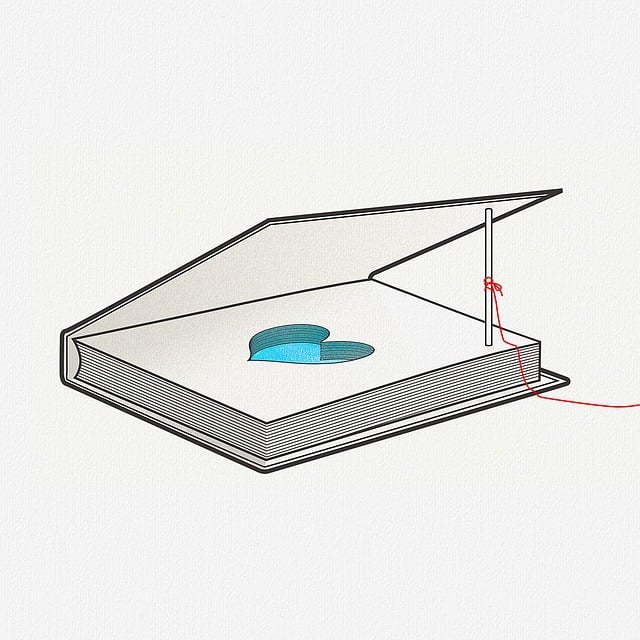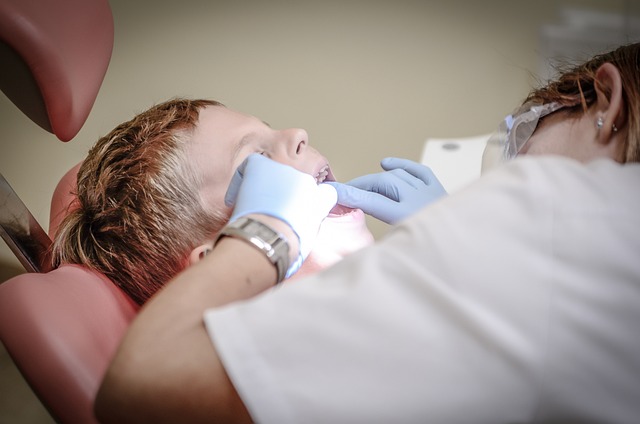Thinking about getting veneers but unsure if Medicaid covers the cost? Look no further! We’ve got all the info you need on insurance coverage for veneers.
1. Understanding the Basics: What Are Veneers and Why Are They Popular?
Veneers are a popular cosmetic dentistry solution that can dramatically enhance the appearance of your smile. They are thin, custom-made shells made from either porcelain or composite resin that are bonded to the front of your teeth. With their ability to instantly improve the color, shape, size, and overall appearance of your teeth, veneers have become increasingly sought-after by individuals looking to achieve a picture-perfect smile.
One of the key reasons why veneers are so popular is their versatility. They can effectively address a wide range of aesthetic concerns, including teeth discoloration, chips, cracks, and gaps. Whether you are looking to restore a single tooth or transform your entire smile, veneers offer a minimally invasive solution that delivers remarkable results. With advancements in technology and materials, veneers now provide a natural-looking finish that seamlessly blends with your existing teeth, ensuring a beautiful and harmonious smile.
2. Unraveling Medicaid Coverage: Does Medicaid Include Veneers?
In order to understand whether Medicaid coverage includes veneers, it is important to have a clear understanding of what Medicaid is and how it works. Medicaid is a government program that provides healthcare coverage to low-income individuals and families. It is jointly funded by the federal government and individual states, with each state having some flexibility in how the program is implemented.
When it comes to dental coverage, Medicaid benefits can vary depending on state regulations and individual circumstances. While Medicaid typically covers basic dental services such as cleanings, fillings, and extractions, coverage for cosmetic procedures like veneers may be limited or not covered at all. It is important to keep in mind that Medicaid primarily focuses on providing essential and medically necessary services, and cosmetic procedures may not fall under that category.
3. Exploring Insurance Coverage for Dental Procedures: An Overview
There are several important factors to consider when exploring insurance coverage for dental procedures. Understanding the scope of coverage can help you make well-informed decisions regarding your oral health and finances. Here is an overview of key points to consider:
-
- Types of dental insurance plans: Dental insurance plans generally fall into two categories, managed care plans and indemnity plans. Managed care plans, such as preferred provider organizations (PPOs) and health maintenance organizations (HMOs), often require you to choose from a network of dentists and offer more affordable rates. On the other hand, indemnity plans, also known as fee-for-service plans, give you more flexibility in choosing your dentist but may involve higher out-of-pocket costs.
- Covered procedures: Dental insurance typically covers a range of preventive, basic, and major procedures. Preventive treatments like cleanings, exams, and X-rays are often fully covered or require minimal cost-sharing. Basic procedures, including fillings and extractions, are usually covered, but with a larger percentage of cost-sharing. Major procedures like root canals, crowns, and oral surgeries may have higher out-of-pocket costs and may be subject to waiting periods.
- Annual maximums and deductibles: Dental insurance plans often have an annual maximum, which is the maximum amount of money the insurance company will pay for covered services within a year. Deductibles, on the other hand, represent the amount you must pay out-of-pocket before your insurance coverage kicks in. Understanding these limits and costs is crucial for proper financial planning.
By familiarizing yourself with the types of plans, covered procedures, and financial details, you can better navigate the complexities of dental insurance and ensure you have the coverage that best suits your needs. Remember to review plan documents thoroughly and consult with your insurance provider directly for any specific questions or concerns.
4. Breaking Down Medicaid Dental Benefits: What’s Covered and What’s Not
Understanding Medicaid dental benefits can be important for individuals who rely on this healthcare program. While coverage may vary depending on the state, there are general guidelines regarding what services are typically covered and what may not be included. Being aware of these details can help beneficiaries make informed decisions about their oral health needs.
Covered Services:
-
- Preventive Care: Medicaid typically covers routine check-ups, cleanings, and X-rays to maintain overall oral health.
- Restorative Treatment: Basic dental services like fillings, extractions, and root canals may be covered by Medicaid.
- Emergency Care: In case of a dental emergency, Medicaid can provide coverage for urgent treatments such as tooth extraction or relief from severe pain.
- Orthodontics: Medicaid may cover braces or other orthodontic treatments for individuals who meet specific eligibility criteria, which can vary by state.
Services Typically Not Covered:
-
- Cosmetic Procedures: Medicaid does not usually cover cosmetic dental services, such as teeth whitening or veneers, as they are considered elective.
- Dentures: While exceptions can exist, full or partial dentures are often not covered by Medicaid for adults, although coverage may be available for children.
- Non-Essential Procedures: Certain dental procedures that are not deemed necessary for oral health, such as dental implants or non-emergency orthodontic treatment, might not be covered.
Remember that these are general guidelines, and coverage specifics may differ in your state’s Medicaid program. It is crucial to consult your state Medicaid office or dental provider to understand your eligibility and benefits. Staying informed about what is covered and what’s not can help you make the most of your Medicaid dental benefits.
5. Navigating the Maze: Finding Out if Your Medicaid Plan Includes Veneers
When it comes to Medicaid, determining if your plan covers veneers can be like navigating a maze. However, with the right information, you can find out if this dental treatment is included in your benefits. Here are some steps to help you uncover if your Medicaid plan covers veneers:
• Review your Medicaid plan: Start by carefully examining your Medicaid plan and its coverage details. Look for any mention of dental procedures or cosmetic treatments, specifically veneers. This information is usually available in your plan documents or on your Medicaid provider’s website.
• Contact your Medicaid provider: If you’re uncertain about your plan’s coverage, reach out to your Medicaid provider directly. They can provide you with specific information about your benefits and any limitations or exclusions regarding veneers. Make sure to have your plan details handy when you contact them for a more efficient experience.
6. The Fine Print: Eligibility Criteria for Medicaid Coverage of Veneers
The eligibility criteria for Medicaid coverage of veneers can vary depending on the state you reside in, but there are some common factors that are typically considered. It’s important to understand these criteria before seeking Medicaid coverage for veneers, as meeting the requirements is crucial for receiving the necessary financial support for your dental treatment.
Income: Medicaid is a needs-based program, so your income will play a significant role in determining your eligibility. Each state has its own income limits, and you will need to fall within those limits to qualify for coverage. Make sure to check the income guidelines specific to your state to see if you meet the requirements.
Medical Necessity: Medicaid typically covers dental procedures that are deemed medically necessary, such as those that improve oral health, restore dental function, or address significant cosmetic concerns. For veneers, Medicaid may only provide coverage if the treatment is necessary for functional reasons rather than solely for cosmetic purposes.
Age: While Medicaid is available to individuals of all ages, some states may have age restrictions or guidelines for certain dental treatments, including veneers. Check with your state’s Medicaid program to determine if there are any specific age requirements for coverage.
Other Requirements: In addition to the factors mentioned above, Medicaid may consider other criteria such as your residency status, citizenship, and any other health conditions contributing to your need for veneers. Be sure to familiarize yourself with the specific requirements in your state to ensure you meet all the necessary criteria for Medicaid coverage of veneers.
When it comes to getting veneers, Medicaid may not always be the best option for everyone. Thankfully, there are alternative insurance options that can help you achieve that perfect smile. Here are a few alternatives to Medicaid that you can explore:
1. Private Dental Insurance: Many private dental insurance plans offer coverage for cosmetic procedures such as veneers. These plans typically have different levels of coverage, so it’s important to compare plans and select one that suits your needs. Some plans may provide full coverage for veneers, while others may cover a portion of the cost.
2. Dental Discount Plans: Dental discount plans are an alternative to traditional insurance that can offer significant savings on veneers. With these plans, you pay an annual fee and gain access to a network of dentists who provide services at discounted rates. While not insurance in the traditional sense, these plans can be a cost-effective way to obtain veneers and other dental procedures.
8. Out-of-Pocket Costs: Understanding Expenses When Choosing Veneers with Medicaid
When it comes to choosing veneers with Medicaid, it’s important to have a clear understanding of the out-of-pocket costs involved. While Medicaid may cover certain dental procedures, it’s crucial to note that veneers are typically considered a cosmetic dental treatment, which is not covered by Medicaid in most cases. As a result, you will likely be responsible for paying for veneers out-of-pocket.
Before proceeding with getting veneers, it’s recommended to consult with your dentist or oral health care provider to discuss the expected expenses. They can provide you with a detailed breakdown of the costs involved, giving you a clearer picture of what to expect. Here are some important factors to consider when it comes to out-of-pocket costs for veneers with Medicaid:
- Cosmetic dental treatment: Veneers are considered a cosmetic dental treatment since they primarily aim to enhance the appearance of your teeth. Medicaid coverage for cosmetic treatments is limited, and you will likely have to bear the full cost on your own.
- Cost variations: The cost of veneers can vary depending on several factors, including the materials used, the location of the dental practice, and the complexity of your case. It’s crucial to obtain a cost estimate specific to your situation from your dentist.
- Payment options: Your dentist may offer payment plans or financing options that can help make the cost of veneers more manageable. It’s worth inquiring about these possibilities to determine if they are available to you.
Remember, while Medicaid may be a valuable resource for certain dental needs, it’s important to have a realistic understanding of the out-of-pocket expenses associated with veneers. Discussing your options with your dentist will help you make an informed decision and find the most suitable dental treatment plan for you.
When considering the use of Medicaid coverage for veneers, it’s essential to carefully assess the pros and cons to make an informed decision. This dental treatment involves placing a thin layer of tooth-colored material over the surface of teeth, improving their appearance. Here’s a breakdown of the advantages and disadvantages to help you weigh your options:
- Pros:
- Cost coverage: Medicaid often provides financial assistance, which can help alleviate the high expenses associated with veneers.
- Improved confidence: Veneers can enhance your smile, boosting self-esteem and confidence.
- Stain resistance: Porcelain veneers are resistant to staining, allowing for long-lasting results.
- Minor dental adjustments: Veneers can help correct minor alignment issues, gaps, or other cosmetic imperfections in your teeth.
- Cons:
- Eligibility limitations: Not everyone qualifies for Medicaid coverage for veneers, as it typically prioritizes essential dental treatments for low-income individuals.
- Temporary fix: Veneers have an average lifespan of 10-15 years, after which they may need to be replaced.
- Irreversible procedure: Once your teeth are prepared for veneers, a small amount of enamel is removed, making the process irreversible.
- Potential for sensitivity: Some individuals may experience temporary tooth sensitivity after getting veneers, although this usually subsides over time.
By objectively assessing these pros and cons, you can make a well-informed decision regarding Medicaid coverage for veneers, weighing the potential benefits against any limitations or drawbacks.
10. Seeking Affordable Solutions: How to Achieve a Beautiful Smile with Medicaid Coverage
Medicaid coverage can provide you with the opportunity to achieve a beautiful smile without breaking the bank. Here are some affordable solutions that you can explore:
Dental examinations and cleanings: Regular dental check-ups are essential for maintaining healthy teeth and gums. Medicaid coverage often includes preventive services such as dental examinations and cleanings. Take advantage of these benefits to keep your smile in top shape.
Fillings and extractions: If you have cavities or need a tooth extraction, Medicaid coverage can help cover the cost of these procedures. It’s important not to ignore dental issues, as they can worsen over time and lead to more costly and extensive treatments in the future.
Dentures and partials: If you are missing several teeth, dentures or partials can be an affordable solution to restore your smile. Medicaid may cover the cost of these prosthetic devices, allowing you to regain your confidence and improve your oral health.
Braces and orthodontic treatment: Medicaid coverage for orthodontic treatment varies by state and individual circumstances. However, some states may provide coverage for braces, retainers, and other orthodontic interventions for children or adults with certain dental conditions.
Emergency dental care: Accidents happen, and dental emergencies can be both painful and costly. Fortunately, Medicaid coverage often includes emergency dental services, ensuring that you can receive the necessary care without straining your finances.
Conclusion
In conclusion, while Medicaid may cover certain dental procedures, the coverage for veneers is generally limited. It is important to carefully review your specific plan and consult with your dentist to understand the extent of your insurance coverage. Remember to explore alternative financing options if veneers are not covered, as a beautiful smile shouldn’t be out of reach.





